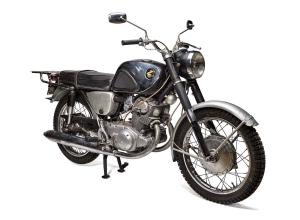Bright Young Librarians: Patrick Olson
Our series profiling the next generation of special collections librarians continues today with Patrick Olson, Special Collections Librarian at the University of Iowa.
How did you get started in rare books?
I started college thinking I'd teach high school English. Problem was, I had enrolled in the College of Liberal Arts and Sciences, not the College of Education. Too lazy to transfer colleges, I opted for the plain old English degree instead, putting my career trajectory in serious flux. Writing seemed too uncertain a life and I didn't know the first thing about steaming a latte. Old books, however, had captivated me since high school, when I learned about Fanshawe, Nathaniel Hawthorne's rare first novel. Just as I started my junior year of college, I asked the owner of a rare bookstore if I could work for him. I think I even said I'd work for free. He took me on--for a fair hourly wage, I should add--and I suppose that's when I really got started. Boy, that was ten years ago this month. Memories!
What is your role at your institution; what do you specialize in as a librarian?
My official title at the University of Iowa is Special Collections Librarian. I'm effectively a curator with a strong focus on collection development. I do some instruction and outreach, but most of that is handled by our department's dedicated Outreach and Instruction Librarian (who has swiftly conquered the Web with an impressive social media presence). My background is in early printed books, though specialization implies some degree of expertise--something I sure won't claim to have. Iowa has a rich tradition of practicing and collecting the modern book arts, so I've been having a blast inhabiting that world lately.
Favorite rare book / ephemera that you've handled?
Do I have to pick one? I remember fondly my first bibliographic triumph, identifying for the bookstore a later edition of Walter Raleigh's History of the World that had been sophisticated to masquerade as a first. Just as memorable was working through a small backlog at DePaul University, where I got to catalog a Richard Pynson incunable that York Minster sold to A.S.W. Rosenbach to help fund some building repairs. It was breathtaking to handle a book that was part of such a storied and controversial transaction. Another one of my all-time favorites is something I cataloged at MIT, an official report on the therapeutic uses of animal magnetism. It had a disturbing note scrawled in the back: "Avoid the breath of the infected in..." But the destination to be avoided had been torn away! You can imagine our frustration. We never did figure out what infected part of the world to avoid.
What do you personally collect?
My focus as an English major was Anglo-Saxon, so my early collecting was directed at (affordable) copies of Anglo-Saxon literature and scholarship. I actually scared up some important books at bargain prices, like the very copy of Edmund Gibson's 1692 Anglo-Saxon Chronicle that Anna Gurney used to prepare the first Modern English translation. I admit that my grocery budget suffered in those days. I ate a lot of boxed rice. These days, I eat marginally better and my collecting is more focused on modern mountaineering memoirs.
What excites you about rare book librarianship?
The people. I love working with the dealers, the craftspeople, the donors. And the librarians, of course, and there's really no substitute for enthusiastic patrons. Having started out at the supply end of collection development, it's fun to be working with dealers on the demand side of things. There's nothing quite as exciting (or educational) as attending one of the big book fairs and surrounding yourself with people who are passionate about books. What's more, I'm lucky enough to be marrying a bookbinder and book conservator, so even when I go home at night there's someone to get excited about rare books with. It's wonderful.
Thoughts on the future of special collections librarianship?
I think the future is looking good. Use statistics are generally up and the demand for rare materials sure isn't letting up. Our instructors at Iowa are increasingly interested in bringing their students to special collections, and our administrators really seem to understand the unique value these collections add to the institution. Methods for delivering content are fast evolving, and probably always will, but people are constantly finding new and important ways to study and appreciate the originals.
Any upcoming exhibitions at your library?
On October 21 we're launching "Hell But Heaven Too: The Making of a Fine Press Book from Idea to Deluxe Edition." In this exhibit, one of our staff members will explore the creation of Ink on the Elbow, a masterpiece of printing and design from David Esslemont and Gaylord Schanilec. We're home to Esslemont's archive, so the exhibit will draw heavily on this unique material. This will be followed in the winter with an exhibit on food as portrayed in the very popular Downton Abbey television series. Culinary material is one of our great strengths here at Iowa, and this will be a fun way to connect our collection to a phenomenon familiar to many of our users.
















